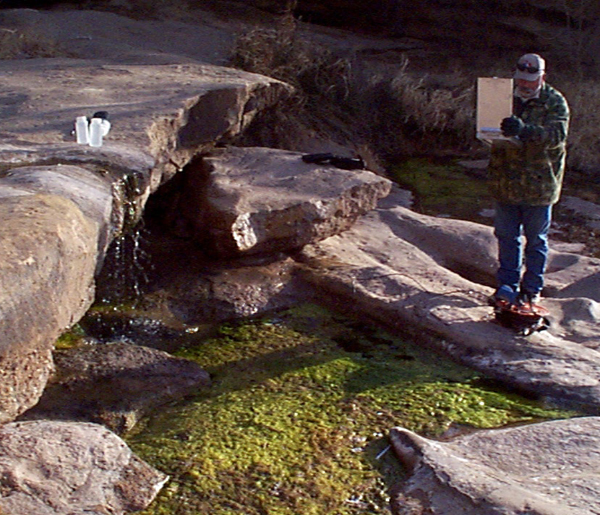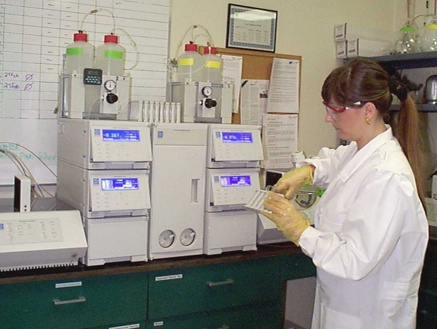We all appreciate good, clean water, right? Well, thanks to work by a team that
includes the Brazos River Authority, water in the Brazos River basin is being regularly scrutinized to keep it safe and clean.

As steward of basin water, the Authority places a high value on the quality of this essential natural resource.
For more than a decade, a major component of this effort has been the Authority’s participation in the Texas
Clean Rivers Program (CRP). Under the program, the Authority monitors water quality at various sites across the Brazos River watershed, reports its findings to
state environmental officials and works with cities, members of the public and various other groups to find ways to keep their water clean.
The program was created in 1991, when the Texas Legislature passed the Texas Clean Rivers Act. Legislators’
goal was to push Texas towards comprehensive water planning and management to ensure the future integrity of the water supply.
The legislation led to a partnership between the Texas Commission on Environmental Quality (TCEQ) and
other agencies, state river authorities, regional and local governments and citizens.
Legislators designated the Authority the lead agency for conducting water quality assessment and CRP
planning in the Brazos River watershed.
With over 125 sites throughout the basin, the Authority collects data every one to three
months, depending on the site, said Tiffany Morgan, Authority environmental services manager. Technicians test for everything from temperature and salinity
to dissolved solids and chemical contaminants.
The data collected is sent to TCEQ, and is used as part of the state’s 305(b) Water Quality Inventory
Report, an overall assessment of Texas waters. Those locations that don’t meet state quality standards are added to the 303(d) List of Impaired Waterbodies.
Each March, basin stakeholders gather at the Authority’s headquarters in Waco for the Brazos basin CRP
steering committee meeting. There participants discuss areas of the basin that need priority in water quality testing.
Also, every five years the Authority issues a Basin Summary Report, which includes assessments of
waterways within the basin, recommendations, stakeholder input and public outreach activities.
Depending on the water quality issues a stream or lake faces, CRP participants might respond with a
Watershed Protection Plan, a means for the community to come together to discuss and plan ways to resolve water quality issues. More severe issues might
call for a government mandated Total Maximum Daily Load Program which limits the discharge of certain contaminants.
Morgan touted the success of one recent effort stemming from community involvement in the CRP.
Tests of water in Lake Aquilla, north of Waco, found the presence of a herbicide that had apparently washed into the lake from nearby farms, Morgan said.
Several nearby communities rely on the lake for water, yet most treatment systems can’t remove the substance.

After a program that involved regular testing and working with area farmers to find ways to keep
the chemical out of runoff, officials were able to reduce the chemical in the lake to meet state standards. As a result, the lake was removed from the
Impaired Waterbodies list, Morgan said.
“Our overriding goal is to have clean, fishable, swimmable, consumable water,” Morgan said. “We can’t live
without clean surface water. It could have huge health impacts, industrial impacts and agricultural impacts.”
You can find more information about the Texas Clean Rivers Program and the Basin Summary Report on the
Brazos River Authority’s Web site,
here. To find out how to participate in the next annual steering committee
meeting, e-mail Jenna Barrett at
jbarrett@brazos.org.